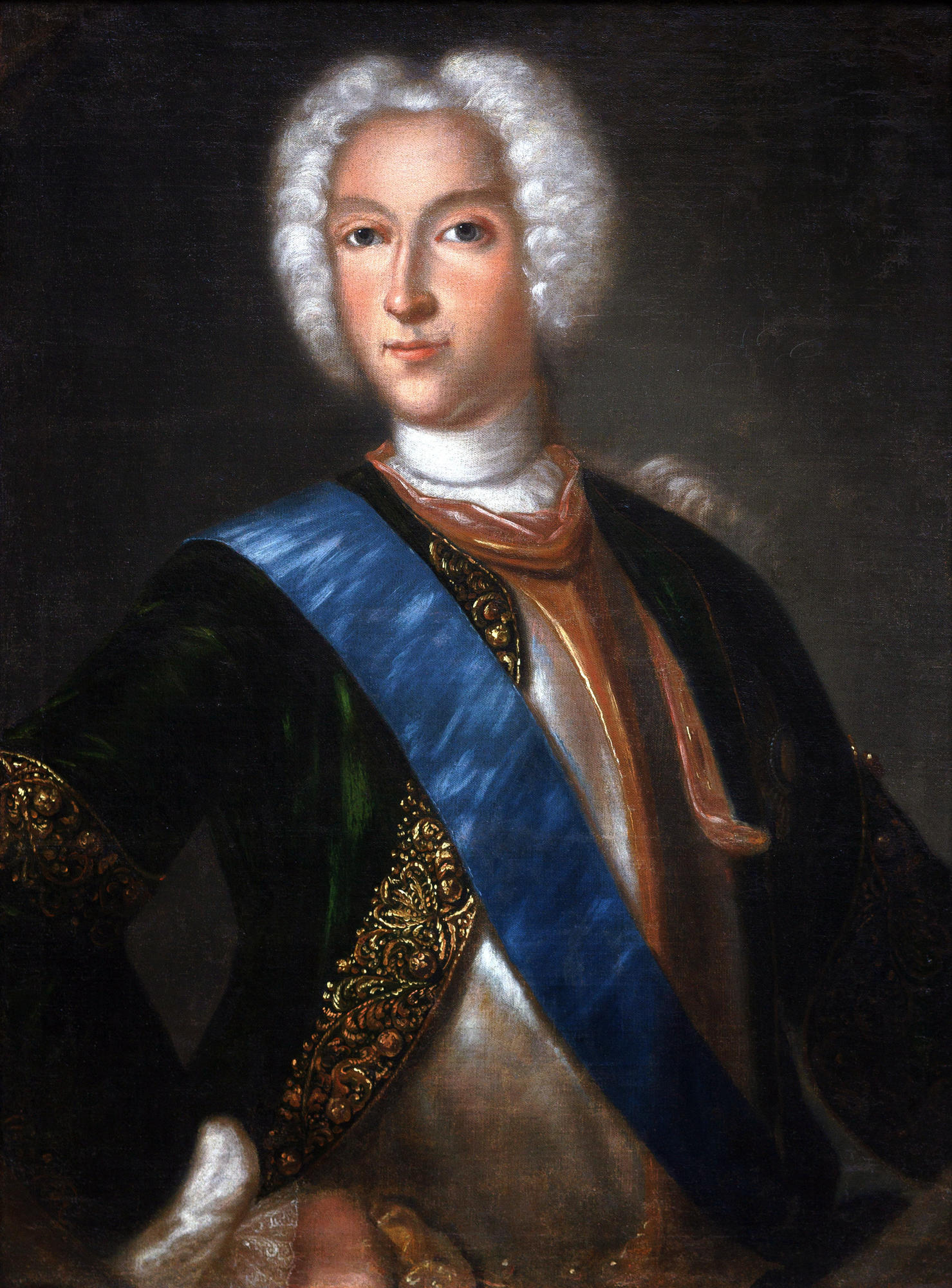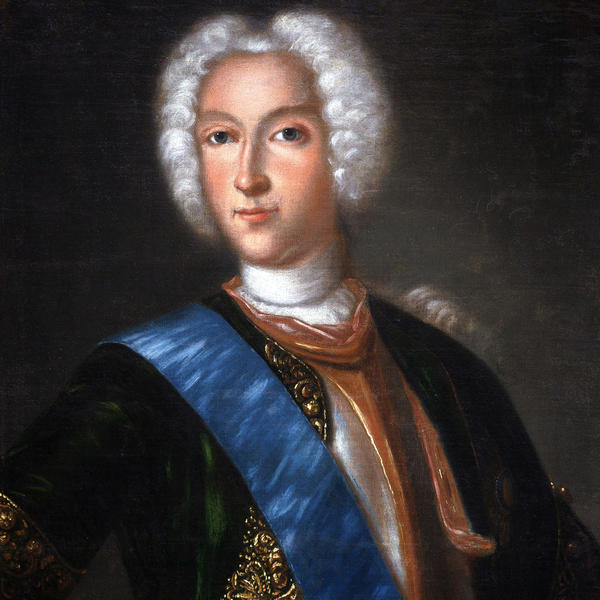This portrait of Peter II, grandson of Peter I, was done by Baltic German artist, Johann Heinrich Wedekind in 1729-1730. The Russian emperor is thirteen in this painting. Peter II succeeded Empress Catherine I when he was just eleven.
Portrait of Peter II
Creation period
1729-1730
Dimensions
77x58 cm
Technique
Oil on canvas
Collection
Exhibition
5
Open in app#1
Johann Heinrich Wedekind
Portrait of Peter II
#2
#3
It is a Baroque painting, an example of the classicist grand portrait popular in the late eighteenth – early nineteenth century. In the portrait, Peter II wears a white shirt with a frilled front. The shirt sleeves are decorated with very fine lace cuffs. The young monarch has a pink silk scarf round his neck and wears an emerald-colour long waistcoat embroidered in gold and a cuirass, a plate armour that covered the back and the chest.
#4
Emperor Peter II is depicted in a grand powdered wig which was in fashion in the middle of the eighteenth century. Resting across his chest is a dark blue moiré ribbon of the Order of the St. Andrew the Apostle the First Called. In the eighteenth century it was the highest award which members of the royalty were given at birth. The order, an eight-pointed silver star bearing a motto ‘For faith and Loyalty’, was worn on the left side above all other decorations.
#5
The artist, Johann Wedekind, was one of the first painters invited to the Russian imperial court. He became the forebearer of the secular portrait genre in Russian art. A German, Johann Wedekind was born in 1674 in Tallinn, Estonia. He spent quite some time working in Sweden. The name of this Baltic German was recognised after he painted a portrait of King Charles XII of Sweden; he became popular among Swedish statesmen, admirals and generals who sat for him. In 1725, invited by Emperor Peter I, he came to St. Petersburg and became a court painter there. He did portraits of Peter the Great, his daughters and courtiers. In 1732, when the first Russian School of Cadets was opened, Johann Heinrich Wedekind started teaching drawing there. This cadet school was meant for the children of aristocrats and officers.
#6
The paints that Johann Wedekind chose for his works contained unusual pigments that were used in medicinal preparations by pharmacists, a fact that proved helpful in attributing many unsigned works by the artist. Under the Soviet rule, in the 1920s, the Petrograd office of the State Museum Funds divested Wedekind’s paintings to provincial museums. Museums today have in their collections fifteen paintings by the artist, of which five are unsigned.
Peter II was the son of Tsarevich Alexei and a German princess of Brunswick-Wolfenbüttel. He came to be the last male descendent of the Romanov line before it become intermingled with foreign dynasties. Peter II died of smallpox when he was just fourteen. The young emperor died on the day of his intended wedding to Ekaterina Dolgorukova. During his reign the real power was wielded by the Supreme Privy Council.
read morehide
00:00
00:00
1x
Portrait of Peter II
Creation period
1729-1730
Dimensions
77x58 cm
Technique
Oil on canvas
Collection
Exhibition
5
Open in app
Share





